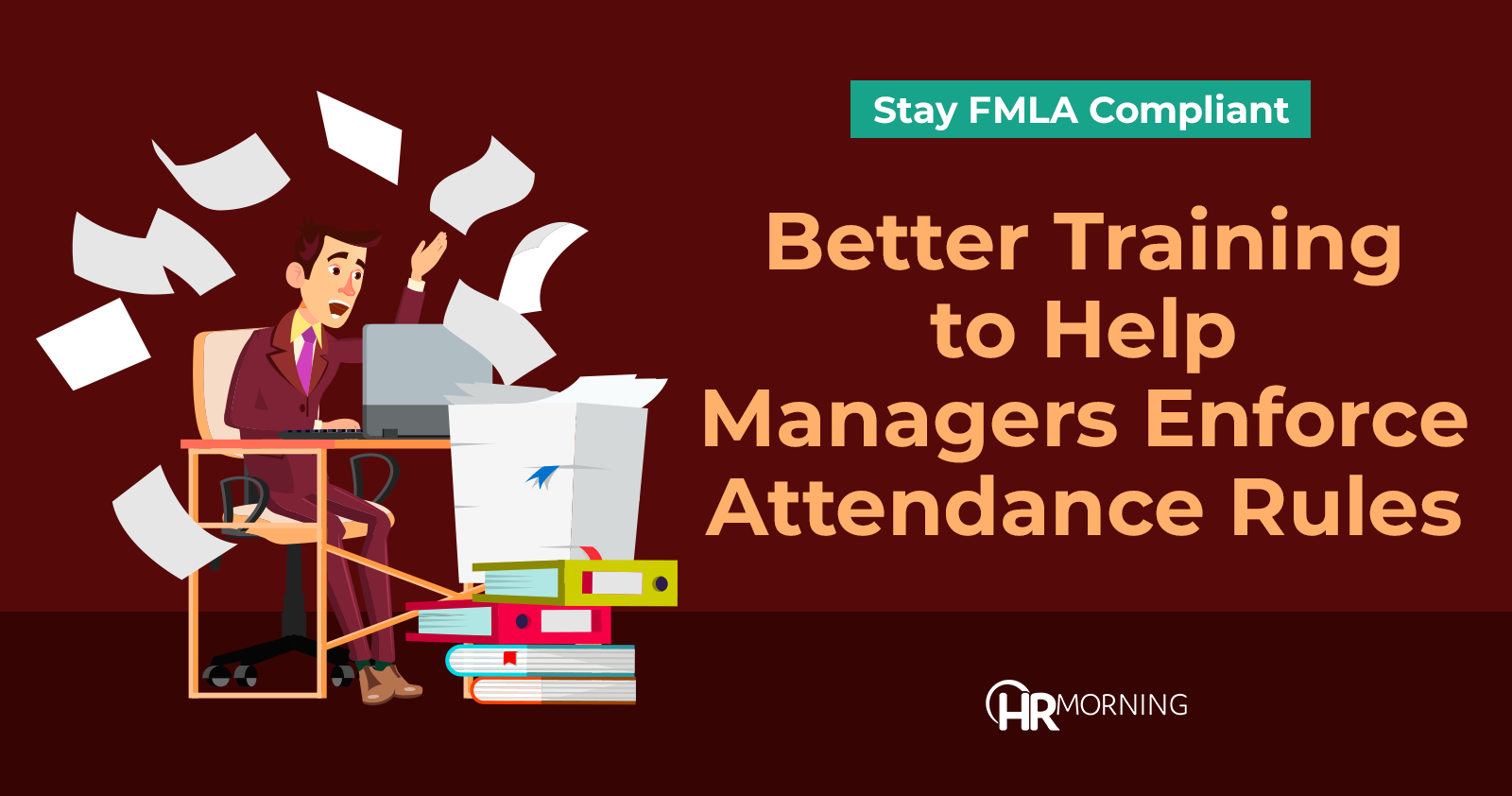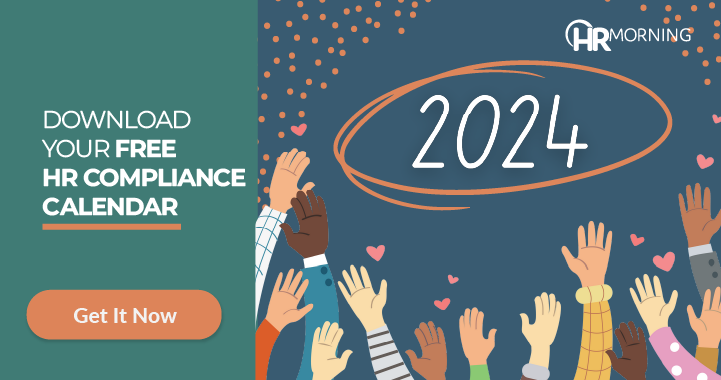US businesses are struggling to keep track of employee absences, and it’s costing them big in productivity, revenue and legal fees. And it’s only getting worse.
Recent stats from The Standard’s Absence and Disability Readiness Index show a growing need for HR and training managers to get out front and develop programs and policies that employees understand and can follow.
Only 1 in 4 HR pros report having successful absence management programs, according to the survey. Many HR pros will tell you that managing absence is one of their biggest headaches. And a lot of it has to do with the federal laws that regulate employee absence – the Americans with Disabilities Act (ADA) and the Family and Medical Leave Act (FMLA).
Unexplained or excessive absences
In fact, one employer is now in court because it fired an employee for missing two weeks of work – an absence that it approved as FMLA leave until its FMLA coordinator realized the employee wasn’t eligible for FMLA coverage because she hadn’t worked 1,250 hours in the previous 12 months.
In Byrd v. City of Houston, The Houston Emergency Center fired 911 operator Iyhana Byrd and she is now suing for violation of her FMLA rights.
That’s why it would be important for HR to choose an FMLA point person or persons to know how much FMLA leave each employee has used, including dates and reasons.
Another company, Alcon Laboratories, fired an employee on FMLA leave, but was justified in its firing, said a court ruling.
In Shoemaker v. Alcon Laboratories, a female employee experienced back pain, headaches and dizziness, but she never told her employer that these symptoms prevented her from doing her job.
On one occasion, she passed out at work and was sent home. She returned with a doctor’s note recommending that she work in a different job until further evaluation, but she’d already been removed from that job.
A few weeks later, she called to say she would not be at work but provided no excuse for her absence. She’d exhausted her paid time off, so she was issued a final warning. She was subsequently fired for, among other things, her unexplained absence.
The employee sued, alleging that the company interfered with her rights to receive FMLA leave and retaliated against her. The court, however, disagreed.
The employee must “provide sufficient information for an employer to reasonably determine whether FMLA may apply to the leave request,” and she failed to do so, the court said.
Employers aren’t required to read the minds of their employees or guess the reasons behind absences.
An employee needs to mention a medical condition or even something as vague as “I need time off.” This would trigger the interactive process.
Growing trend
Each of these cases points to a growing trend of employers’ inability to manage their attendance policies. These rulings highlight the need for employers to maintain written attendance policies that detail disciplinary action.
“Employers are in a much better position to defeat FMLA interference and retaliation claims with meticulous tracking of time off and communication with the employee regarding unexcused absences,” says employment attorney Tasos Paindiris, Jackson Lewis in disabilityleavelaw.com.
To keep up with employee absence regs and DOL guidelines, employers need to put in place a robust management program – to define, measure and benchmark absence – to help avoid a lawsuit. Here’s how:
Enforce policies. If your policy requires employees to call in if they’re going to be late or absent, you can discipline employees on leave for not complying with it. However, call-in policies must be applied consistently for all forms of absences. Another best practice: Requiring employees to use specific absence forms to make sure they stay compliant with your policies.
Dealing with chronically absent employees can be tricky, especially when those employees are disabled. But there’s good news: Courts are confirming that regular attendance is an essential function for many jobs under the ADA.
Get help from vendors. Work with outsource providers that have ADA and FMLA compliance built into their offerings.
Share absence management. Get your entire HR team involved in compliance and absence management. For example, assign one employee FMLA absences, while another concentrates on ADA absences.
Provide training. Employers might offer training to their managers on how to best manage absences, as well as the basics of employment law. The Society for Human Resource Management offers onsite training or an online learning platform like Degreed can offer company-specific courses to managers to be able to identify conditions, communicate with employees, implement accommodations and track absences.
Establish procedures. Give employees a set of guidelines to follow when reporting they’ll be absent or late for work, including:
- a method for tracking attendance (this might include time clock attendance software that tracks PTO, FMLA, etc.)
- a list of approved absences (and required documentation)
- when disciplinary action is taken, and
- a procedure for requesting time off.
Track every accommodation request. In an ADA case, Vitti v. Macy’s Inc., an employee claimed the company didn’t accommodate her illness, then fired her because of her condition after she returned from medical leave. But the employer said the worker had chronic attendance issues even before her medical leave. She also never submitted the proper paperwork for an accommodation. The court said the worker couldn’t be denied an accommodation she didn’t ask for.
That’s why employers need to make it clear to employees how to ask for accommodations and then track all those requests.


